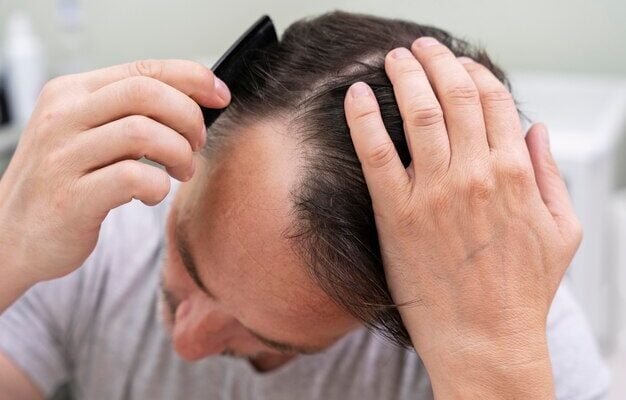
At some point, most people experience hair loss without scalp damage. Medical term for hair loss is alopecia. Overall hair thinning without bald spots or patterns is diffuse hair loss. This form of hair loss may not be obvious to others, but the person will feel their hair is thinner and less full. This category includes common conditions: Telogen effluvium (accelerated shedding following childbirth, fever, or weight loss) Androgenic hair loss (“male-pattern baldness,” “female-pattern baldness”) What are the two non-scarring hair loss types? 1. Patchy hair loss Certain disorders cause minor or significant patches of scalp hair loss. Common reasons of patchy hair loss: Alopecia areata (small circular or coin-sized scalp bald patches that heal within months) Tight braids or ponytails cause traction alopecia. The tendency of twisting or tugging hair Capititis (fungus) Syphilis 2 2. Hair loss diffuse Common diffuse hair loss causes: Pattern alopecia The drug-induced alopecia Protein deficiency Cancer, endocrine, and telogen effluvium-induced alopecia What is areata alopecia? Alopecia areata is an autoimmune disease that damages hair follicles. Most alopecia areata patients have no systemic issues and need no medical tests. Despite the common belief that alopecia areata causes stress, the opposite may be true. Alopecia areata, a common skin ailment, begins as a quarter-sized circle of smooth bald skin. Without therapy, these patches recur after 3–6 months. White hair can regenerate and turn black. Complete scalp baldness is alopecia totalis. Not all patients with localized hair loss lose hair on the scalp. Alopecia areata can also damage eyebrows and beard hair. Treatment for alopecia Small doses of triamcinolone are injected into alopecia areata regions to encourage hair growth. Localized injections may not work for vast areas, but they can help hair grow faster. Oral steroids, immunosuppressives, and ultraviolet light therapy are offered for more severe cases, although side effects may make them unsuitable for most individuals. Patients can usually hide or comb over mild occurrences. Since this style is fashionable, some men shave their scalps and some wear hairpieces in severe and chronic situations. Baricitinib (Olumiant), a JAK1/2 inhibitor, has shown promise in treating significant alopecia areata or totalis in small populations. Long-term research continues.

